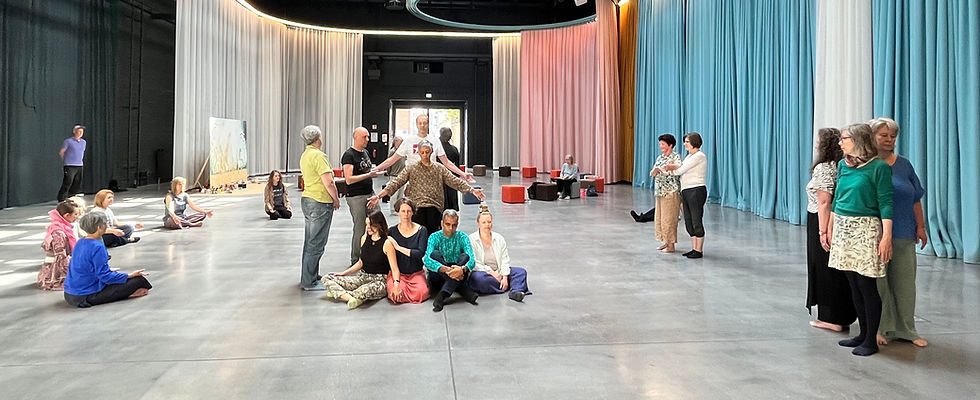Social Presencing Theatre

What is SPT?
Social Presencing Theatre (SPT), developed by Arawana Hayashi as part of the Theory U framework from the Presencing Institute, includes a set of creative and embodied “tools” or practices that help individuals and groups understand social systems more deeply and sense what wants to emerge or shift.
Tools in Social Presencing Theatre
1. Stuck Exercise
You embody a situation where something feels stuck — maybe at work, in a relationship, or in society. You create a still posture (a “sculpture”) that represents how it feels.
Then you ask:
-
What is the seed of possibility in this stuckness?
-
What wants to happen?
-
You slowly move into a new sculpture that represents the more open, healed version.
Why it's useful:
-
Reveals invisible tensions or patterns
-
Helps you sense next steps from within
🪢 It's like showing your inner knot — and slowly feeling how to untangle it.
2. Village / Field Dance
A group walks slowly through a shared space, sometimes stopping or interacting. No plan, no choreography — just sensing and moving.
Why it's useful:
-
Helps you tune into group dynamics
-
Builds field awareness — how everyone’s presence affects the whole
It’s like becoming part of a human ecosystem — feeling how one movement shifts the whole field.
3. 4D Mapping
A group takes on roles in a real-life system — e.g., a school, company, or community. One person is “the student,” another “the teacher,” another “the administration,” and so on.
You start with a sculpture of how the system feels now — then slowly move into a new future possibility sculpture.
Why it's useful:
-
Makes complex systems visible
-
Reveals hidden power dynamics, emotions, and relationships
-
Inspires action and clarity
Imagine you’re building a living model of your school or workplace — but using bodies instead of Legos.
4. Time Travel
You create three “body sculptures” of:
-
The past situation
-
The current state
-
The emerging future
You feel into each one and explore how you move between them.
Why it's useful:
-
Gives a broader perspective on change
-
Helps clarify your direction and potential
It’s like being a time-traveling detective of your own life or organization.
5. Duets / Triads
Two or three people move together in silence — sensing, responding, and co-creating a shared movement experience.
Why it's useful:
-
Develops deep listening and co-creation
-
Builds trust and connection
-
Opens up new forms of non-verbal communication
🎶 Think of it like jazz — your bodies are instruments improvising a meaningful conversation.
6. Social Body Scan
A guided meditation that brings attention to the individual body and the “social body” — the collective sense of presence in a group.
Why it's useful:
-
Builds group awareness
-
Helps you sense what’s alive and moving in the collective
It’s like zooming out from your own body to feel the heartbeat of the group.
Want to learn more about Social Presencing Theatre? Get in touch!